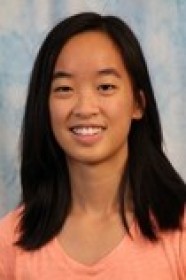
10:30 am to 11:30 am
Event Location: GHC 2109
Bio: Tiffany Huang is a M.S. student in the Robotics Institute at Carnegie Mellon University advised by Prof. Michael Kaess. She received her B.S. with honors in Mechanical Engineering from the California Institute of Technology in 2014. Her current research focuses on perception and simultaneous localization and mapping (SLAM) algorithms for autonomous underwater vehicles.
Abstract: Although the ocean spans most of the Earth’s surface, our ability to explore and perform tasks underwater is still limited to shallow depths and short missions. Towards expanding the possibilities of underwater operations, imaging sonar or forward looking sonar (FLS) is commonly used for autonomous underwater vehicle (AUV) navigation and perception. A FLS provides bearing and range information to a target, but the elevation of the target is unknown within the sensor’s field of view. Hence, current state-of-the-art techniques commonly make a flat surface (planar) assumption so that FLS data can be used for navigation.
A novel approach, entitled acoustic structure from motion (ASFM), is presented for recovering 3D scene structure from multiple 2D sonar images, while at the same time localizing the sonar. Unlike other methods, ASFM does not require a flat surface assumption and is capable of utilizing information from many frames, as opposed to pairwise methods that can only gather information from two frames at once. The optimization of several sonar readings of the same scene from different poses, the acoustic equivalent of bundle adjustment, and automatic data association is formulated and evaluated on both simulated data and real FLS sonar data.
